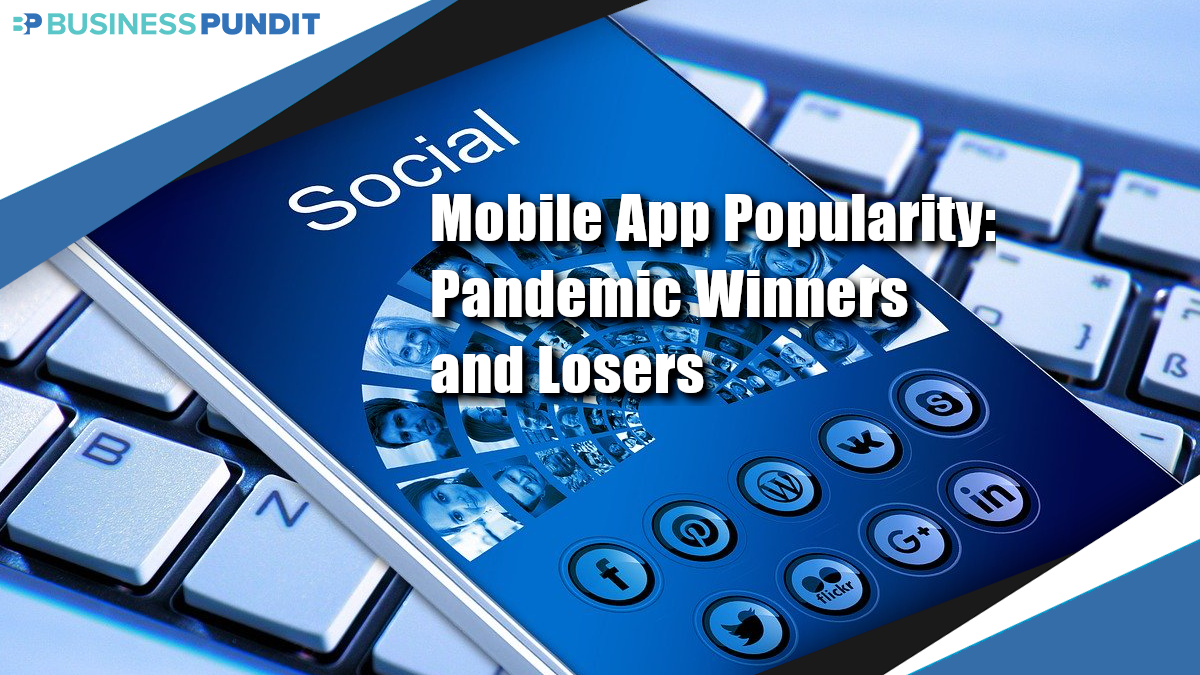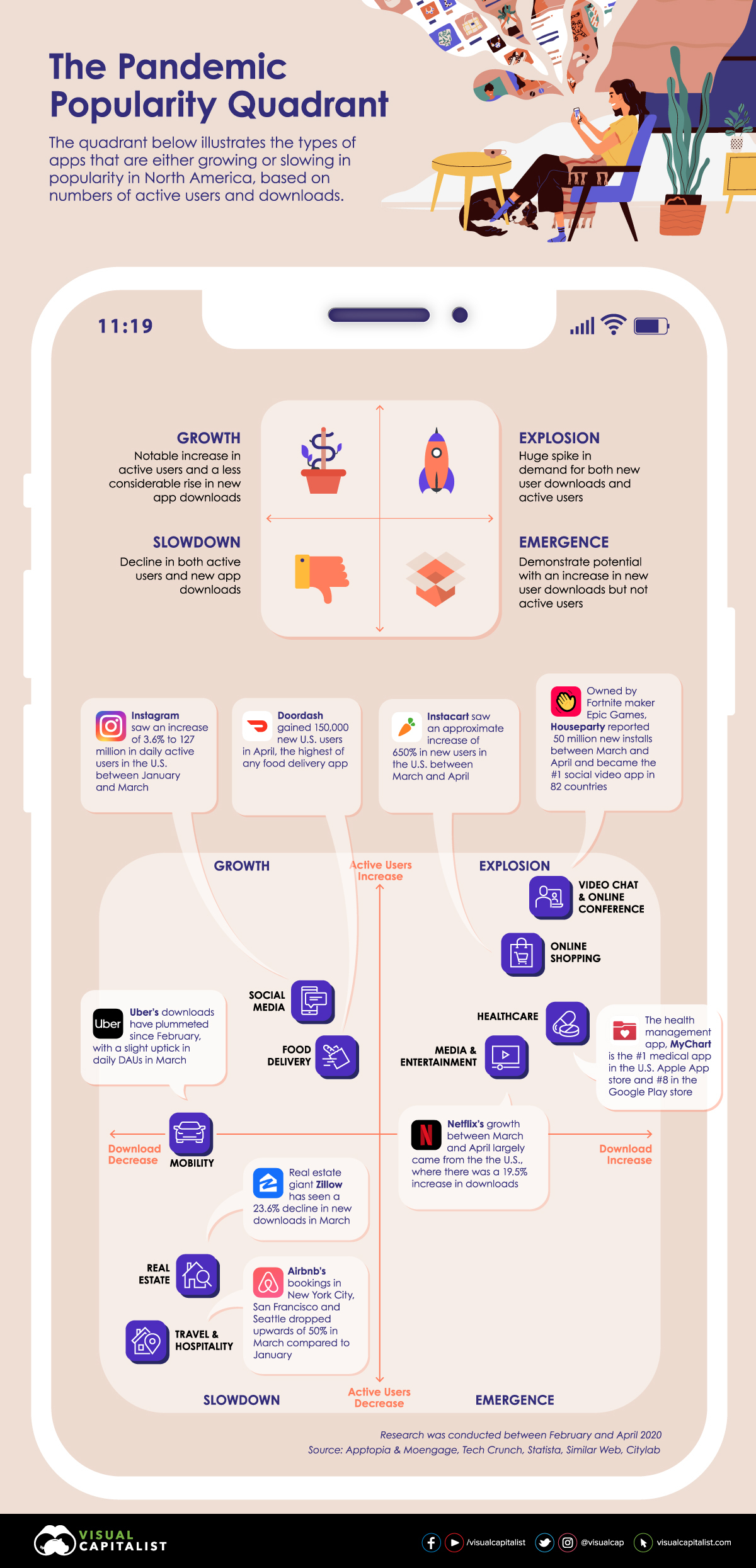
The coronavirus pandemic has had a distinct impact on the app market in North America. Some types of apps are seeing explosive growth in the number of active users and downloads. Others have seen a drastic decline in popularity.

Popular Mobile Apps On the Rise
Major social media apps have seen more daily active users. Social media apps accounted for 20% of all mobile app usage in the US at the beginning of 2020. By mid-March use of social media apps had risen to 25% to total mobile app usage.
Other apps that have grown during the COVID-19 pandemic include Doordash and other food delivery apps. Doordash was the biggest winner in food delivery apps with 150,000 new users in April.
Apps that have experienced explosive growth in popularity since the coronavirus pandemic started include video chat and online software apps, online shopping apps, healthcare and telemedicine apps, and media and entertainment apps.
Social video app Houseparty, owned by Epic Games gained 50 million new users between March and April. It’s now the #1 social video app in 82 countries.
Instacart, a popular shopping app, had an approximate increase of 650%, also between March and April, the prime pandemic lockdown time in the United States.
MyChart, a health management app, is the #1 medical app in the U.S. Apple App store and #8 in the Google Play store. It has experienced tremendous growth since the COVID-19 pandemic started.
Netflix has broken the internet. During March and April Americans watched a lot more Netflix than pre-quarantine. The Netflix mobile app had a 19.5% increase in downloads.
Mobile Apps Declining in Popularity
Since February, downloads of the Uber app have all but stopped. There was a glimmer of hope in March when the app saw a slightly higher number of daily users.
Zillow, a leading real estate app, had a decrease in new downloads of 23.6% in March.
Airbnb, a lodging rental app, has seen bookings in some major cities drop by about 50% from January to March.
The emergence of popular new mobile apps in the US has basically come to a standstill.